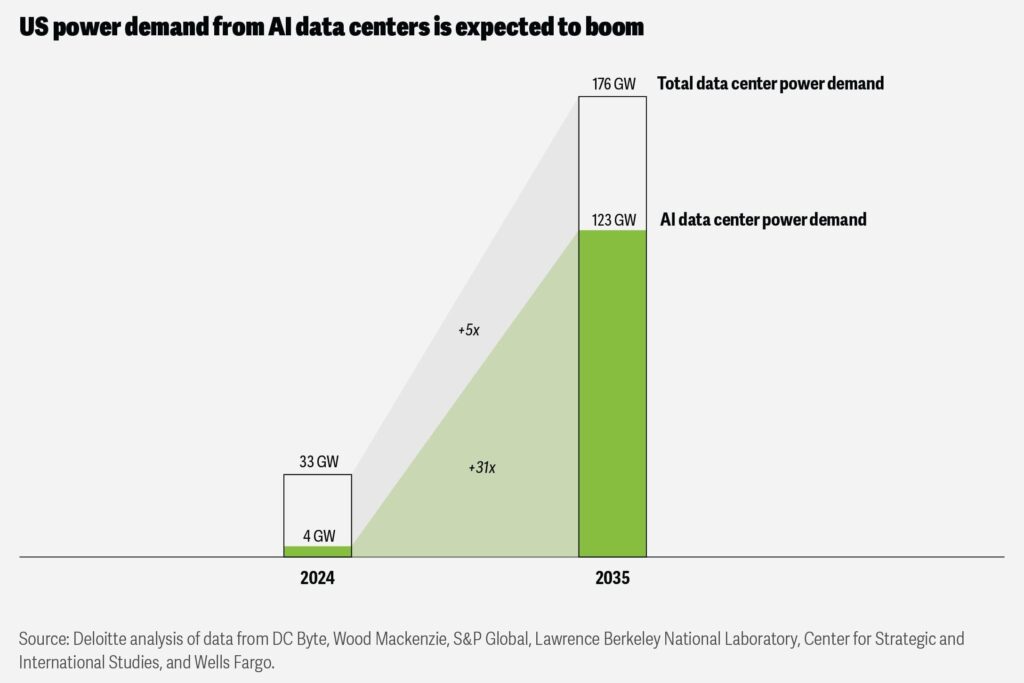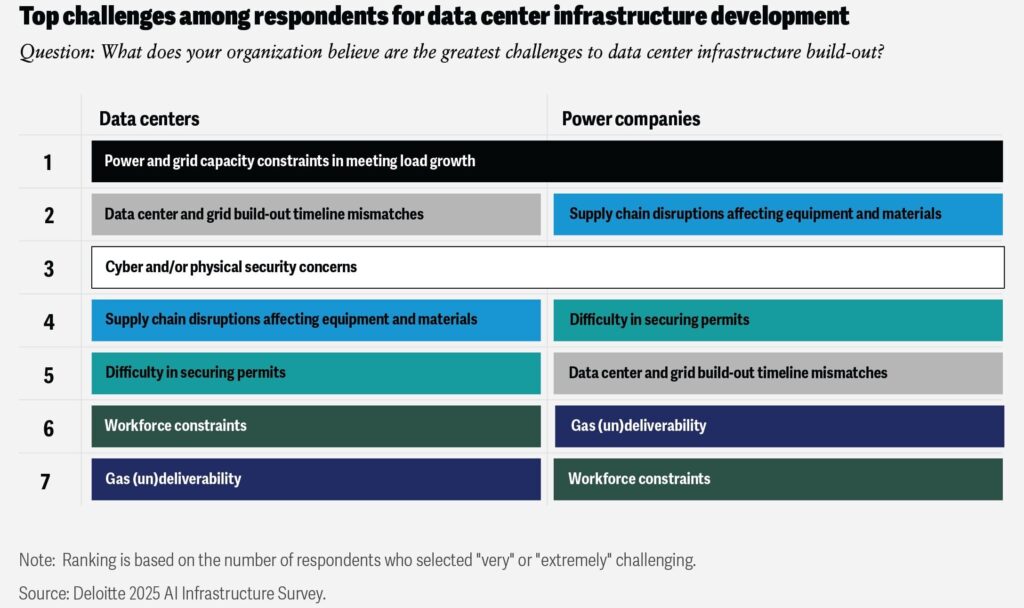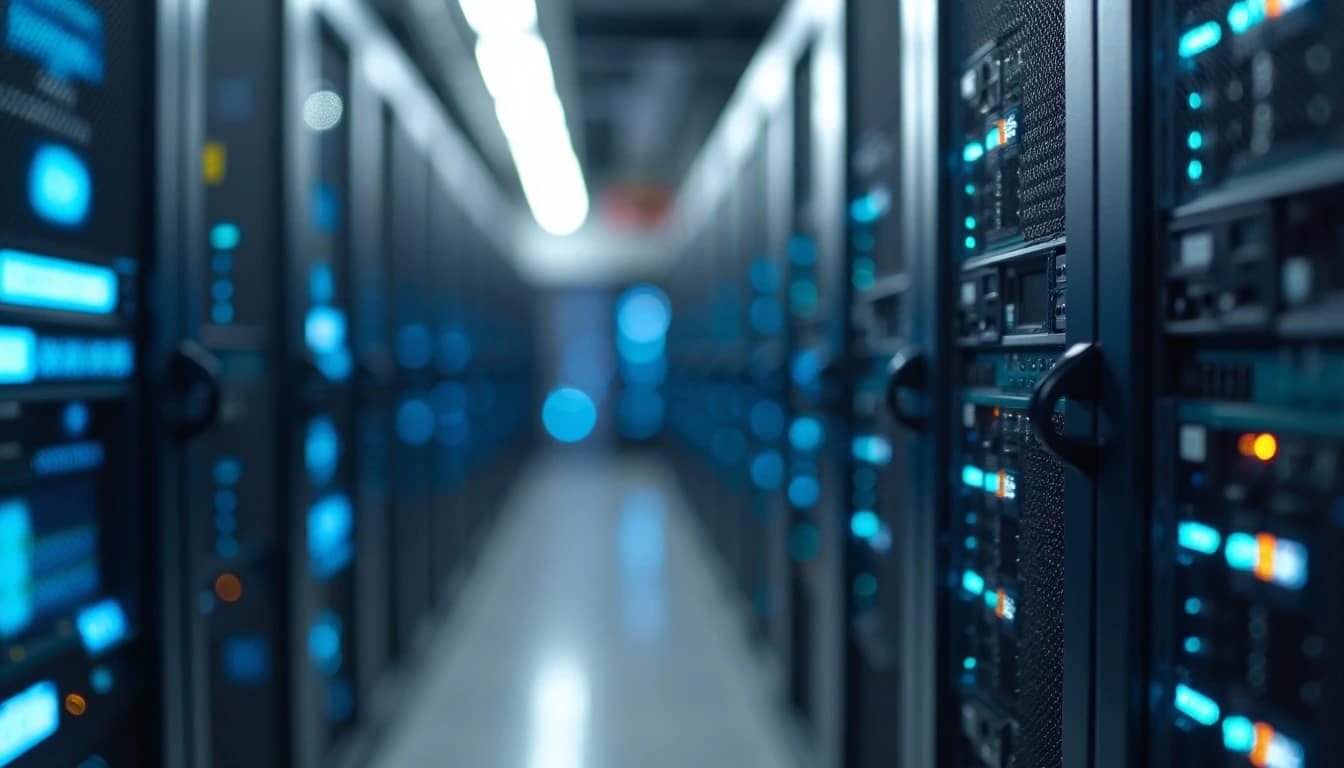The rise of artificial intelligence strains the United States’ electrical infrastructure and demands collaboration among key sectors, according to a new report
Consulting firm Deloitte has issued a strong warning regarding the exponential growth of energy demand associated with data centers for artificial intelligence (AI). In its latest report titled “Can U.S. Infrastructure Keep Up With the U.S. Economy?”, the firm estimates that the electricity consumption of these infrastructures could increase from 4 GW in 2024 to 123 GW in 2035, representing a more than 3,000% increase.
This leap, driven by the accelerated development of generative AI models and the deployment of specialized supercomputers, threatens to overload the capacity of U.S. electrical grids. The conclusion is clear: the current infrastructure is unprepared to handle this revolution without profound transformations.
AI could account for 70% of electricity consumption in data centers by 2035
According to Deloitte’s analysis, while in 2024, AI-dedicated data centers made up only 12% of the total electricity demand in these environments (around 33 GW), by 2035 they could consume 70% of the estimated total of 176 GW. This unprecedented expansion is generating a new economic ecosystem, where energy, construction, manufacturing, and technology sectors must work together to avoid bottlenecks.

The data comes from a survey conducted in April 2025 with 60 executives from the energy sector and another 60 from the data center sector in the United States.
Investment, collaboration, and urgency
Deloitte warns that data center expansion projects are progressing faster than the establishment of new power generation sources, which could create a dangerous gap between demand and actual capacity. Additionally, 72% of respondents believe it is “very difficult” or “extremely difficult” to cover the growing load with the current electrical grid.
To address this situation, the consultant proposes a roadmap based on three pillars:
- Technological and regulatory innovation: 90% of data center operators consider it “very important” to improve efficiency through new technologies, such as smart transformers and new energy transmission methods.
- Integration of renewable energy: 66% of data center leaders advocate for greater adoption of clean energy sources.
- Funding and cross-sector coordination: while there is a willingness to collaborate, only 15% of respondents believe that current alliances between utility and technology companies are truly effective.
Moreover, the tech industry plans to invest over $1 trillion in manufacturing supercomputers, chips, and servers for AI in the U.S. over the next four years, while utilities are expected to make a similar effort in energy infrastructure over a five-year horizon.
The new energy landscape for AI
AI-powered data centers are no longer modest facilities: existing and under-construction infrastructures by major operators (the so-called hyperscalers) are starting to operate in power ranges of hundreds of megawatts (MW), with some initial projects already reaching the gigawatt (GW) scale.

This is putting significant pressure on electrical supply. 79% of companies in the sector foresee that AI will significantly contribute to energy demand growth over the next decade. However, some utilities see an opportunity in the greater efficiency that AI can bring to consumption management.
Additional challenges: supply, timelines, and costs
The report also highlights other critical obstacles:
- Competition for energy capacity: 92% of data center operators see energy availability as a key source of tension.
- Supply chain disruptions: 65% of surveyed companies identify this issue as a limiting factor in expansion.
- Concerns about security and timelines: mismatches between energy and technology development phases are perceived as a threat to infrastructure deployment.
Regarding affordability, 60% of utilities do not believe that residential consumer concerns will impact data center expansion, compared to 47% of operators who do consider it a limiting factor.
A strategic opportunity for the United States
“There is an opportunity in infrastructure development to support national strategic priorities in AI and energy dominance. But it is a complex task, and analyses reveal gaps that urgently need to be addressed,” says Martin Stansbury, partner at Deloitte & Touche LLP.
The report concludes that without coordination among key sectors—energy, construction, manufacturing, and technology—the advancement of AI could be hindered by the very limitations of the system that supports it.
In this context, the United States faces the challenge of turning a technological disruption into a sustainable competitive advantage. The race to power artificial intelligence with electricity has already begun.

